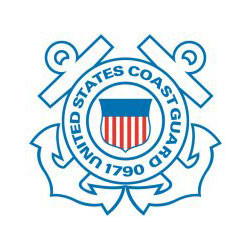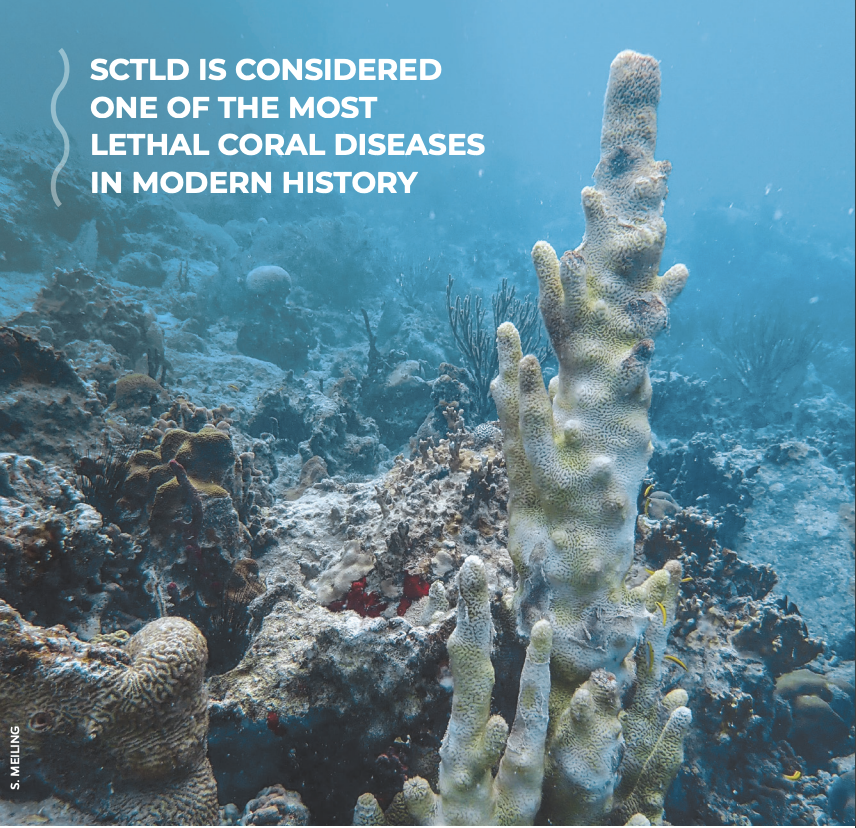Coral reefs support a large diversity of marine life and hold enormous ecological, economic, and cultural value to hundreds of millions of people around the world, providing valuable ecosystem services, including nutrition, economic security, and protection from natural disasters.
In the U.S., coral reefs in the Atlantic, Caribbean, and Pacific regions help generate billions in annual tourism dollars, yield ~$100 million annually in commercial fisheries and protect tens of thousands of lives and billions in property and economic activity from flooding and erosion. Unfortunately, coral reef ecosystems are in peril due to a number of global and local stressors.
An Unprecedented Coral Disease
Recently, an unprecedented coral disease outbreak, called stony coral tissue loss disease (SCTLD), has been devastating reefs throughout the western Atlantic and Caribbean, compounding recent losses to coral reef ecosystems. The disease was first detected off the coast of Miami in 2014 and has since spread throughout Florida’s Coral Reef and to 25 countries and territories in the western Atlantic and Caribbean. SCTLD is believed to be the most lethal coral disease ever recorded due to the large number of coral species that are susceptible, rapid spread, high levels of mortality, long tenure, and wide geographic extent.
Stony coral tissue loss disease can be transmitted via seawater and direct contact with sick corals and sediments. Ocean currents may contribute to local spread but are not sufficient to explain disease spread across the greater Atlantic and Caribbean. This has prompted concerns about its potential spread to the Indo-Pacific. Ships (specifically ballast water and biofouling) have been linked to the spread of invasive species and are known to harbor pathogens and parasites, leading scientists to consider them as potential contributor to the spread of SCTLD. Shipborne spread has been invoked to explain the arrival of SCTLD in the Bahamas, Turks & Caicos Islands, and the U.S. Virgin Islands. Federal agencies, States, and academic institutions continue to conduct research to learn more about the disease and mechanisms of spread.
In response to this ongoing environmental threat and the potential for shipborne spread, the Coast Guard urges vessel owners and operators to familiarize themselves with existing ballast water requirements [USCG: 33 CFR Part 151 and 46 CFR Part 162.060; EPA: 2013 Vessel General Permit (VGP), as codified by the Vessel Incidental Discharge Act)] and ballast water management recommendations in MSIB 07-19. We also encourage vessel owners and operators to familiarize themselves with biofouling management and cleaning regulations and recommended practices (e.g., 33 CFR Part 151.2050; EPA 2013 VGP Sec. 2.2.23).
For additional information about SCTLD transmission, please visit: Stony Coral Tissue Loss Disease: Understanding & Preventing Disease Transmission Fact Sheet – Florida Sea Grant (flseagrant.org)
U.S. Coast Guard Office of Design and Engineering Standards
Washington, D.C.




